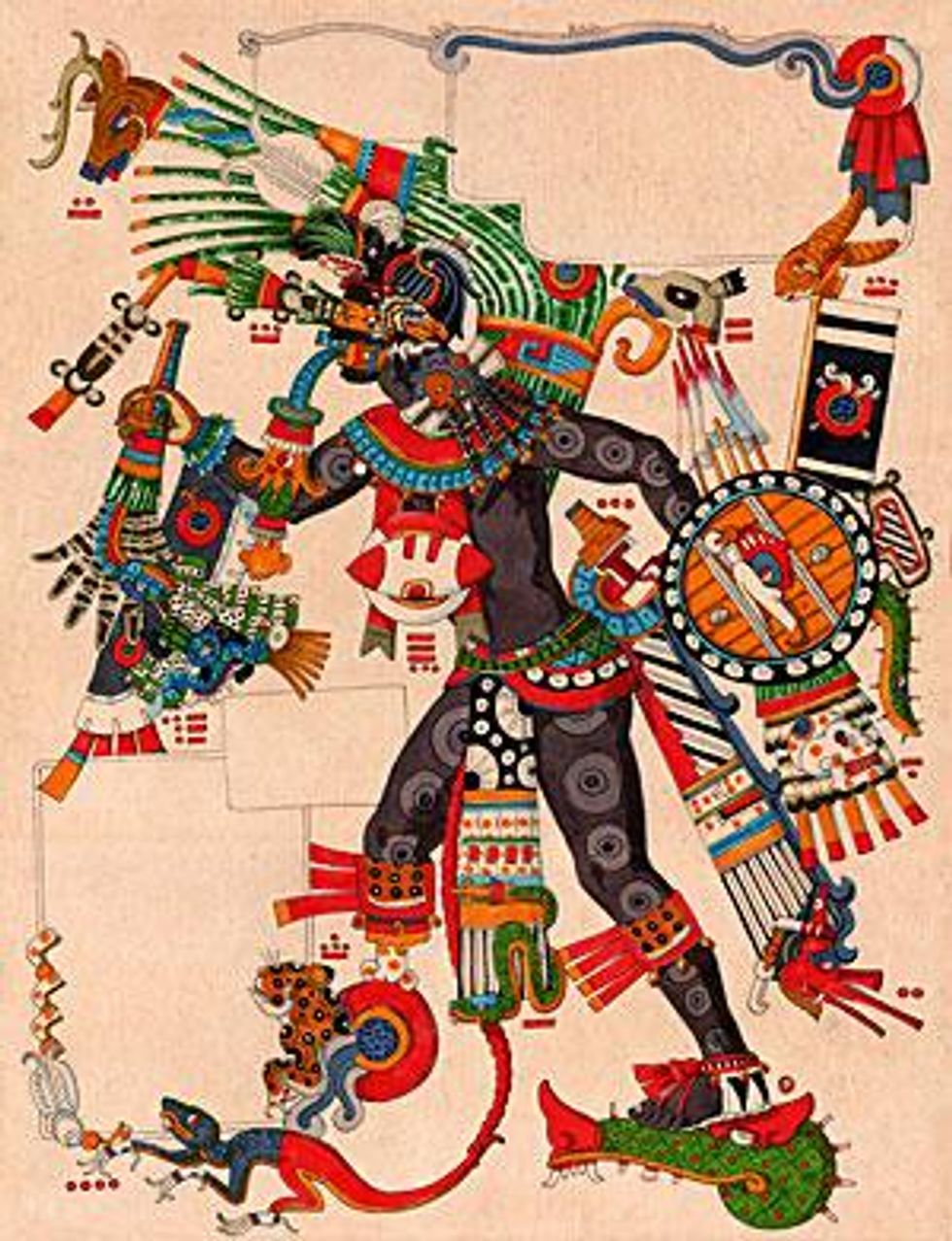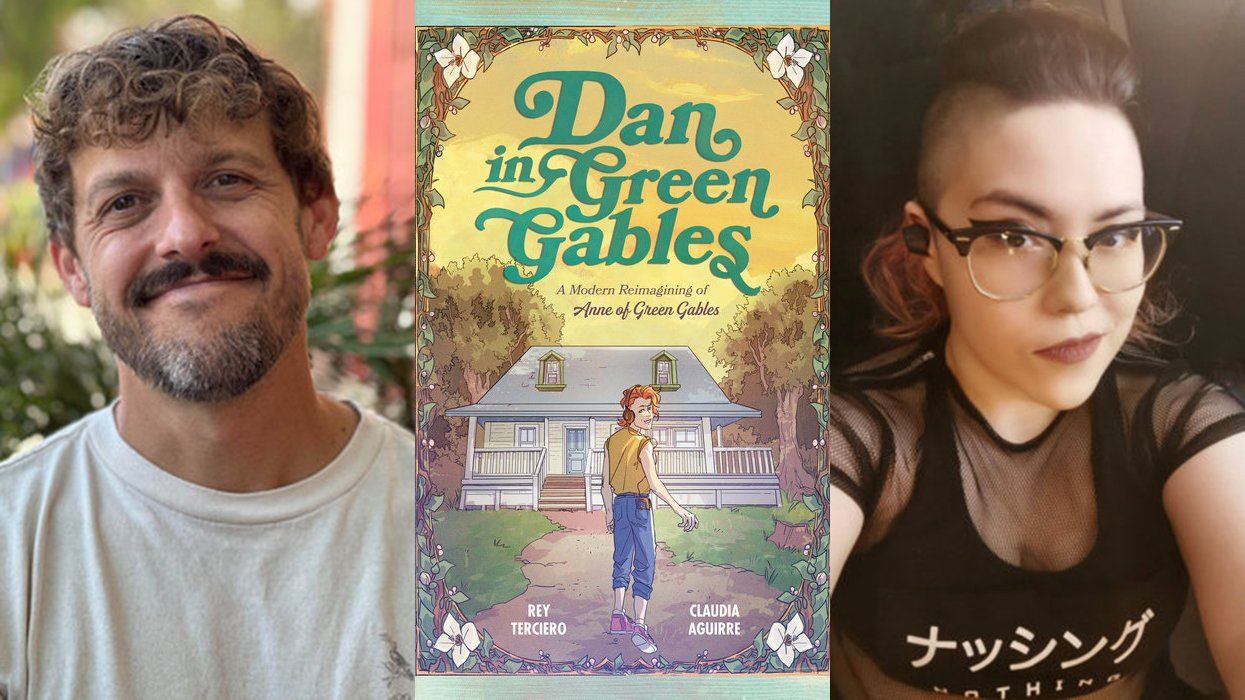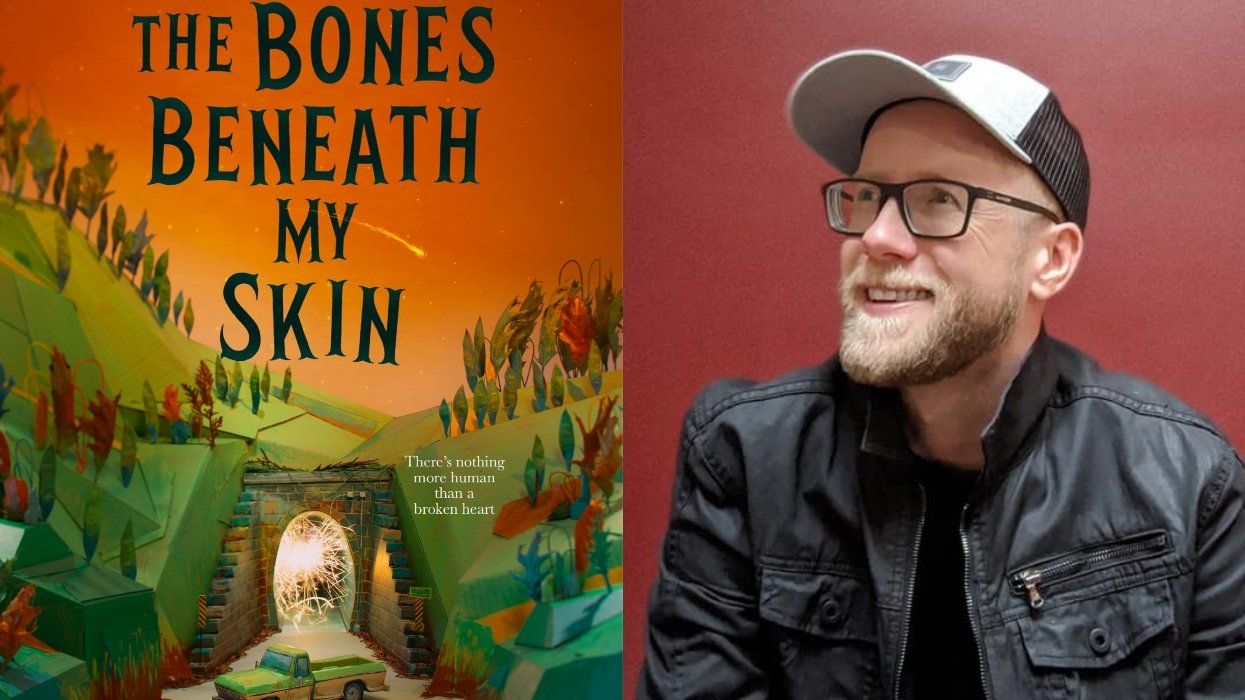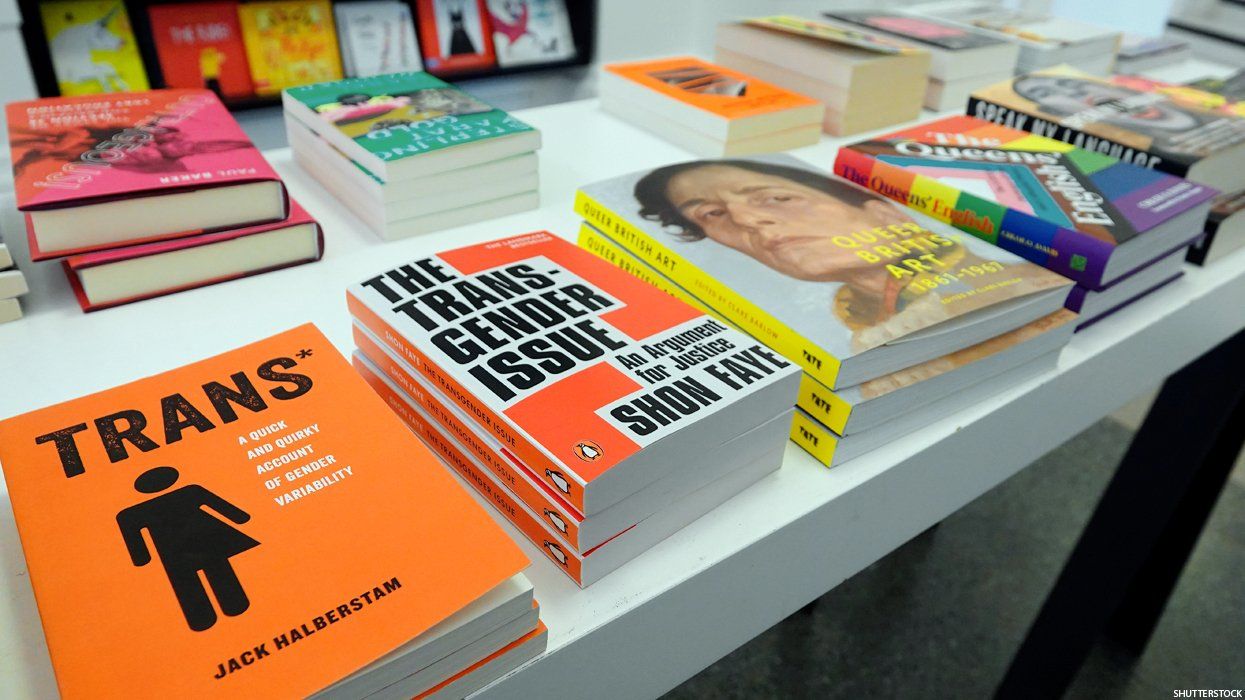Photograph by Adam Wiseman
David Gremard Romero was living in a white San Francisco neighborhood with his white Ohioan boyfriend when he realized something was amiss. "I hadn't spoken Spanish, except with my mom, in years," he recalls. "I felt really disconnected from my roots and wanted to be part of a Latino community."
Anxious to reconnect, Romero joined a local group of Aztec dancers and was soon drawn into a reverie of pre - Columbian history. A keen reader, he ordered a copy of the Codex Borgia -- a densely illustrated Aztec manuscript structured around the sacred 260-day year, or tonalpohualli -- and tumbled into a wormhole of Mesoamerican mythology. "On a spiritual level I felt it was feeding something deep in me, and on another level it's a book of pictures, and I'm a painter," he says. "It was a storytelling language I had never considered before."
If the Codex Borgia was a baptism of fire for Romero, a trip to a contemporary Buddhist temple in Thailand helped crystallize how he might incorporate the Codex into his work.
"It's called the White Temple; it has crazy flying buttresses on the roofs and it's totally white, with millions of mirrors on the exterior so that it blinds you when you see it," he recalls. "I arrived by complete coincidence on the day they were installing the Buddha in the main temple."
Watching a group of 40 women armed with water lilies for the Buddha, Romero had an epiphany. "I was taught the traditional way that the artist makes work based on his experience; it's very solitary and very egotistical, but the women worshipping inside that temple were not interested in the artist who made it, they were there for the Buddha, because the work speaks to a tradition much greater than the artist."

Now based in Mexico City, Romero is creating his own codex, multilayered and ripe with allusion, drawing on his study of the tonalpohualli as well as some mind-blowing peyote sessions. It's an art project, but -- like that temple in Thailand -- one with a deep spiritual dimension. "The intention behind the book is for people to be able to access this world that I think is really profound, while changing it to reflect our world and my values, which includes being OK with being gay," he says. "The knowledge is just so lost and diffuse, and my book is a way of bringing that back."
Romero acknowledges that the Aztec empire was often brutal, characterized by "crazy human sacrifices and war," but he believes it's important to separate the idea behind sacrifice -- "which is profound and beautiful" -- from the act. "For the Aztecs, the metaphor of sacrifice extended to all parts of life," he says. "We're not born to take, we are born to serve, and our culture could really use a little of that."
For more on the artist's work, visit his website.






























